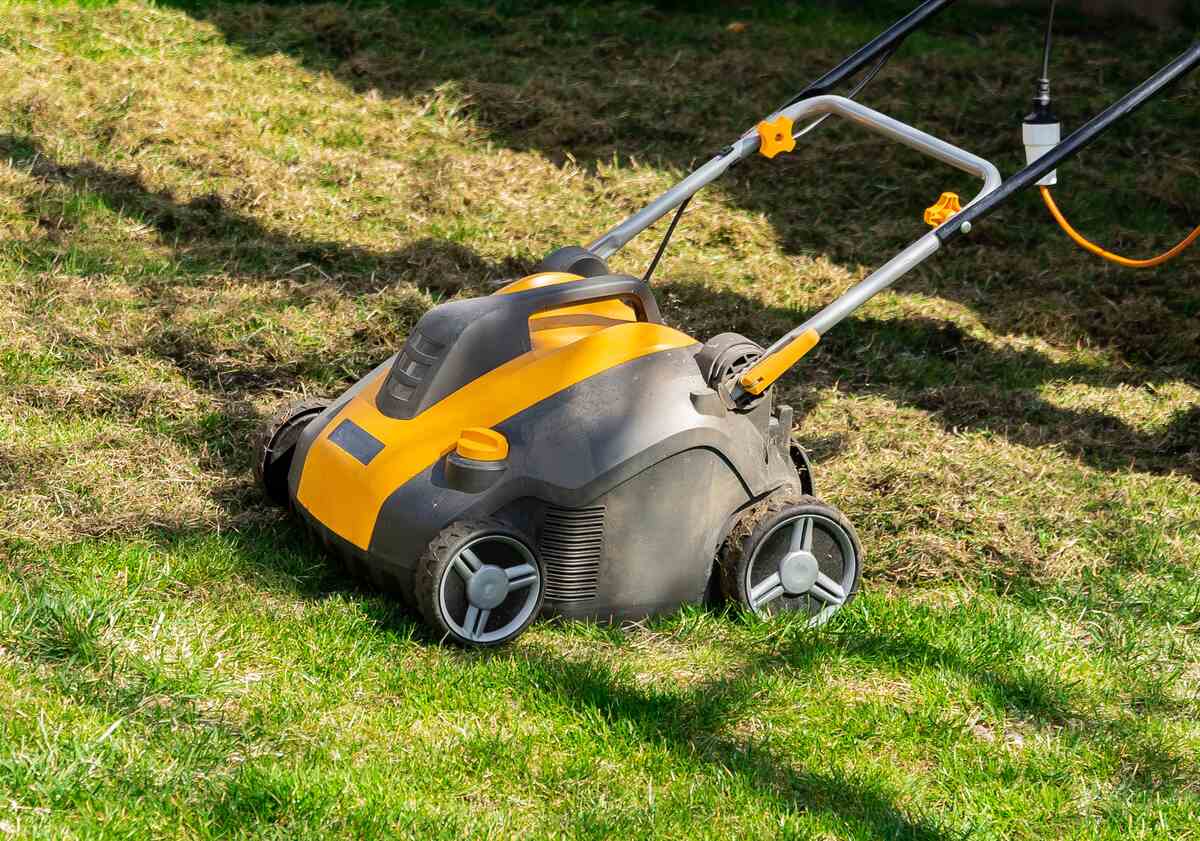
The thatch in your lawn is the layer of organic matter that accumulates between the soil and the grass. You’ve probably heard about how it’s bad for your lawn, but that’s not entirely true.
A little thatch won’t hurt anybody, but how much is too much? Well, if your lawn feels squishy and spongy to walk on, then you might have a thatch problem. Let’s find out what thatch is, how it develops, and more. We also share the advice of two experts to help you understand more about thatch and its implications for your lawn.
What is Thatch?
The thatch in your lawn is the layer of tightly intertwined organic matter that forms between growing grass and the soil surface. This organic matter is made up of living and dead grass stems, leaves, and roots. It develops naturally over time.
“Thatch, to some degree, is present in all lawns. Depths of one-half inch or less are normal,” says Aaron Steil, Consumer Horticulture Extension Specialist for Iowa State University. Lawn problems start only when this layer gets deeper than 1/2 inch.
What Does Thatch Look Like?
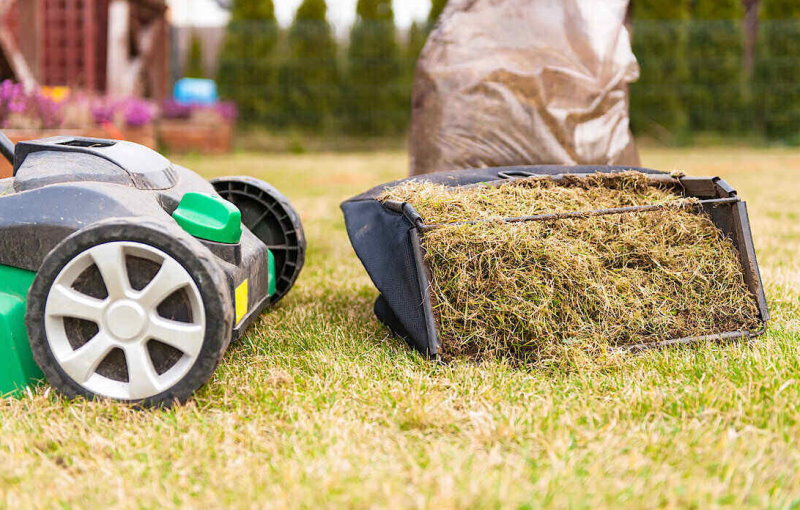
Thatch looks like a layer of spongy, stringy material that forms between the soil and the grass stems. Lawn thatch also acts much like a sponge does. Whenever your yard gets wet from rain or irrigation, a lot of the water gets trapped in this thatch layer.
When the thatch layer gets too thick, it can cause a whole host of lawn issues, from dehydration to plant death. Steil explains, “When the thatch layer becomes deeper than one-half inch, the roots of the plants will start growing in the thatch layer made up of living and dead shoots, crowns, and roots instead of the soil. This increases the potential for turf damage due to drought, extremes in temperature, diseases, and insects.”
How Thatch Develops
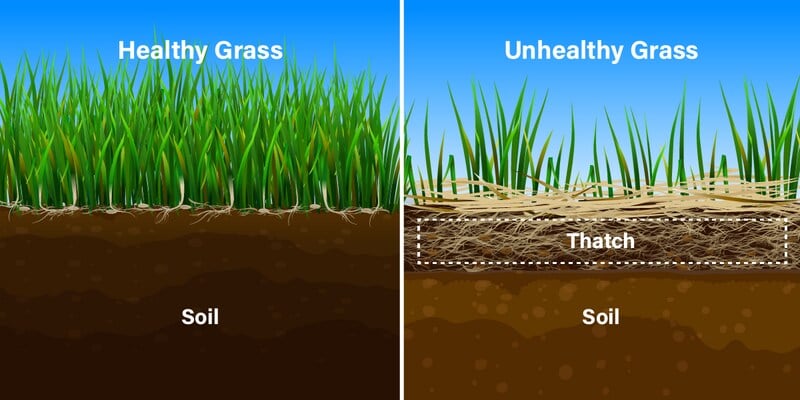
Thatch develops gradually over time when your lawn produces more organic material than the organisms in the soil can decompose. With that, living and dead grass material starts to accumulate between the growing grass and the soil, forming the thatch layer.
Thatch development is a natural process, but the speed at which it accumulates is what homeowners can influence. Bad lawn care practices or poor lawn management can speed up the process of thatch accumulation.
Steil observes, “In home lawns, thatch tends to only be an issue in lawns that are over-fertilized, over-irrigated, and/or infrequently mowed.” In addition to these, here are a few other common causes of thatch:
- Excessive fungicide and pesticide use. Decomposers are living things that break down organic material. Using too many fungicides and insecticides can kill earthworms, microorganisms, and other decomposers, leading to more thatch.
- Bad fertilization practices. Typically, bad fertilization technique results in too much nitrogen being introduced to your lawn, which can invite disease. This also promotes fast and vigorous lawn growth, which means it produces more organic material that can become part of the thatch layer.
- Highly acidic soils. While grass typically prefers more acidic over alkaline soils, too low of a soil pH can kill beneficial organisms, resulting in thatch buildup. Ideally, you should conduct a soil test every three to four years to check its pH.
- Soil compaction. Compacted soil isn’t an ideal environment for grass or microorganisms. Hard soil that you can barely dig is one of the telltale signs of compacted soil.
- Improper irrigation. Watering your lawn too much will discourage deep root growth. Shallow roots can also contribute to thatch buildup.
- Bad mowing practices. If you don’t mow your lawn frequently and let it grow tall, you’re more likely to take off more than 1/3 of your turf’s leaf blades. You might get more of the stem, which breaks down slower than the leaves. Take a look at our lawn mowing tips to get a perfect mow every time.
See Related:
- Integrated Pest Management for the Lawn
- How to Fix an Over-Fertilized Lawn
- Why, When, and How to Test the Soil pH of Your Lawn
- Signs of Overwatering Your Lawn
The Pros and Cons of Thatch
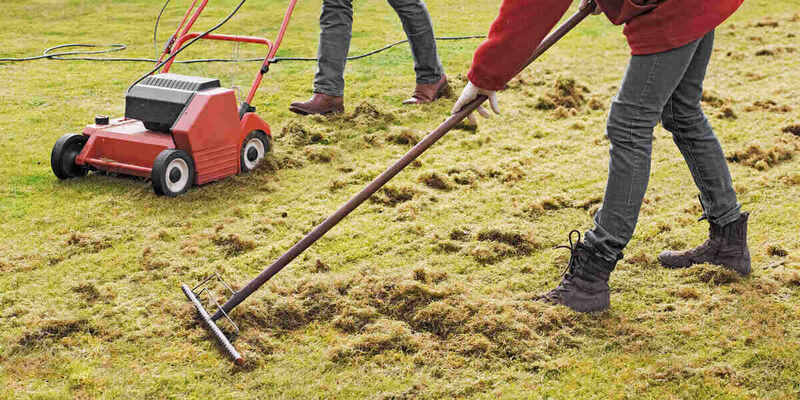
Since homeowners typically find out about thatch when it starts causing problems, you might be surprised that it actually has benefits.
A Thin Layer of Thatch is Beneficial
✓ Thatch helps insulate the soil. It protects your grass roots from fluctuating temperatures.
✓ Thatch helps keep your soil moist. Since thatch traps water, it can help keep your soil moist for a longer period of time. As long as you don’t overwater your lawn, this shouldn’t be an issue.
✓ Thatch makes your lawn resist foot traffic better. Thatch is spongy and helps soften foot traffic. As a bonus, your lawn feels softer to walk on.
✓ Thatch helps prevent weed germination. Weeds have a harder time sprouting when there’s thatch.
However, too much of anything often becomes detrimental. Thatch is no different; a thick layer of thatch makes your lawn less healthy in the long run.
Too Much Thatch Causes Problems
✗ Excessive thatch restricts the movement of air, water, fertilizer, and other important nutrients. It doesn’t only trap water; it also traps other essential building blocks that turfgrass needs to grow strong and healthy, keeping water and fertilizers from reaching the soil.
✗ Excessive thatch promotes shallow roots. Because all of the nutrients are trapped in the thatch, your grass roots won’t have any incentive to grow deep. A shallow root system makes for an unhealthy lawn; it’s less drought-resistant and has worse cold, heat, and disease tolerance.
✗ Excessive thatch causes soil moisture issues and contributes to lawn diseases. When thatch dries out completely, it’s difficult to get it wet again. It causes problems when it’s too wet too, encouraging fungal growth, preventing air from getting to your turf’s root system and inviting common lawn diseases.
✗ Excessive thatch makes mowing your lawn more difficult. Remember how thatch is spongy and springy? That can cause your lawn mower’s wheels to sink, making your grass blades higher than usual. This makes it easier to scalp your lawn, leading to an ugly, damaging, and possibly uneven cut.
Additionally, excessive thatch may also be one of the reasons your grass grows in clumps due to how it impairs nutrient absorption.
If you suspect your lawn might have excessive thatch, check our guide to learn the signs your lawn has too much thatch.
Grasses That Are Prone to Thatch
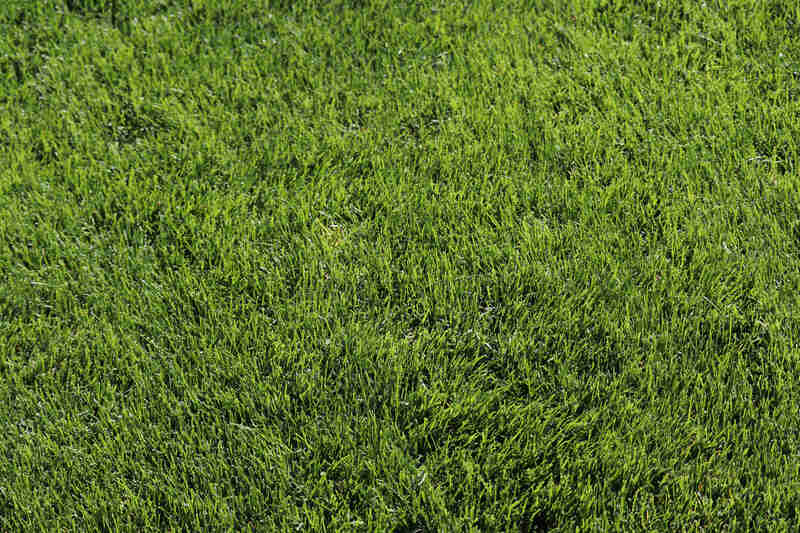
Photo Credit: Shutterstock
Some grasses are more prone to developing thatch, typically those that are more high-maintenance and spread through stolons and rhizomes (or both). Additionally, grasses that have more lignin — a material found in plant cells that’s difficult to break down — produce more thatch. These thatch-prone grasses are:
- Kentucky bluegrass
- Creeping bentgrass
- Creeping red fescue, a type of fine fescue
- Hybrid Bermudagrasses
- St. Augustinegrass
- Zoysiagrass
- Centipedegrass (when overfertilized)
How to Check for Thatch
Are you worried about having a thatch problem? Dr. Becky Bowling, Assistant Professor in the Department of Plant Sciences and Extension Specialist at the University of Tennessee in Knoxville, mentioned these telltale signs: “A spongy lawn underfoot or a bouncy mower during operation can be signs of excessive thatch buildup.”
Additionally, she explains, “Homeowners may also notice increased weed and disease pressure, as thatch can create a favorable environment for many pests.”
Checking the thickness of your lawn’s thatch layer is quite easy; all you need is a trowel and a ruler (if you want to be precise). Here’s the best way to measure thatch thickness:
- Cut out a small plug of grass about 2 inches deep with a trowel or another garden tool.
- Look at the plug. You should see the grass, the soil, and a spongy layer of thatch in between them.
- Press down on the thatch and measure it. If it’s more than 1/2-inch thick, then you have too much thatch.
- Repeat with a few more plugs around different parts of your lawn to check if it’s a problem across your whole yard.
How to Get Rid of Thatch
Dethatching is the best way to get rid of thatch in your lawn. It involves tearing through your lawn to remove the thatch layer beneath with a dethatching tool. As Steil advises, “If thatch levels are too deep, use a vertical mower or power rake to detach the lawn.”
- Dethatching rake
- Power rake
- Vertical mower (also known as a verticutter)
Pro Tip: A manual dethatching rake is best for very small areas.
Here’s a brief overview of how to get rid of thatch:
- Water your lawn two days before dethatching.
- Run the dethatching machine across the lawn at least three times.
- Remove the piles of thatch and dispose of them when you’re finished.
For a more in-depth look at how to get rid of thatch, you can read our article about How to Dethatch Your Lawn for a detailed, step-by-step guide.
Pro Tip: To kill two birds with one stone, know that you can dethatch and aerate at the same time.
Ways to Prevent Thatch
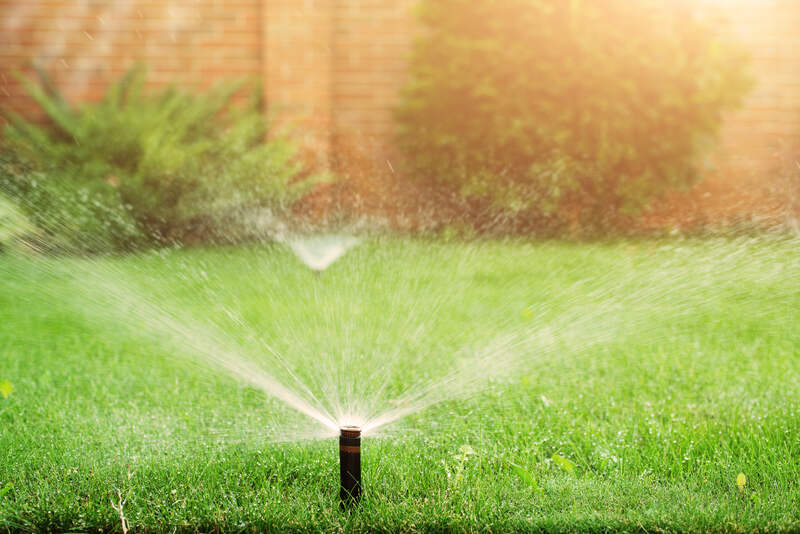
A lot of what you can do to minimize thatch production is to practice good lawn management. As Steil says, “When lawns are maintained appropriately, thatch is rarely a concern. Proper watering and mowing techniques, moderate fertilizer applications, and annual (or bi-annual) core aeration are all maintenance practices that help prevent excessive thatch build-up.”
Here are some lawn maintenance tips for How to Prevent Thatch:
- Water deeply and infrequently. Instead of watering for a few minutes every day, water your lawn once or twice a week in the morning.
- Fertilize responsibly. Don’t overfertilize. Fertilize your grass with a slow-release fertilizer during your turf’s growing season.
- Mow your lawn properly. If you mow your lawn often and take off only 1/3 of your turf’s crown whenever you mow, you’ll keep your lawn neat while preventing thatch buildup.
- Practice grasscycling. Using grass clippings as mulch on your lawn promotes the population growth of beneficial organisms that help get rid of thatch.
- Maintain the proper soil pH for growing grass. The optimal soil pH for growing a healthy lawn and fostering microbial activity is around 6.0 to 7.0.
- Consider aerating your lawn. Core aeration helps your lawn breathe by reducing soil compaction. This promotes healthy grass growth and removes some thatch, too.
See Related:
- Best Time to Water Your Grass
- How to Fertilize Your Lawn
- Reasons to Use Grass Clippings as Mulch
- Why, When, and How to Lime a Lawn
FAQ About Thatch
You should dethatch during your turf’s growing season, just before its annual growth spurt.
• For warm-season grasses, dethatch in the late spring or early summer when rainfall (or irrigation) is sufficient and air temperatures fall between 80 to 95 Fahrenheit, Bowling specifies.
• For cool-season grasses, dethatch from late summer to early fall.
Bowling also states, “While dethatching is typically not necessary every year in a home lawn, it can be beneficial every two to three years, particularly for certain species like Zoysiagrass.“
Visit our article on When to Dethatch Your Lawn for an in-depth look at the right time to dethatch.
Never dethatch a stressed lawn. A lawn that’s stressed from drought and high temperatures is weakened and won’t be able to recover from dethatching quickly. According to Bowling, “Extreme weather conditions, such as excessive heat, drought, or cold, should be avoided to prevent undue stress.”
She explains, “Because dethatching is a mechanical injury to the turf, scheduling it during periods of active growth is essential for proper recovery, which can be further supported with fertilizer, supplemental irrigation, and topdressing.”
Bunch-type grasses don’t really spread, so they’re less prone to thatch development. Bunch-type grasses homeowners can cultivate in their lawns include tall fescue and perennial ryegrass.
The national average cost of dethatching your lawn, if you hire a professional landscaping service, is about $175 per hour or between $0.04 and $0.06 per square foot.
Dethatch for a Healthy and Green Lawn
While a little bit of thatch is good for your lawn, you’ll need to get rid of it if it becomes too thick. You could do it yourself — you can rent (or buy) the tools you need if you want to dethatch your lawn DIY. However, it takes quite a bit of time and effort to get it done properly.
So, why not hire someone else to dethatch your lawn? LawnStarter can connect you with capable lawn care professionals in your area who can get rid of that pesky thatch for you. Hire a lawn care pro near you today.
Main Image Credit: stenkovlad / Adobe Stock Free / License